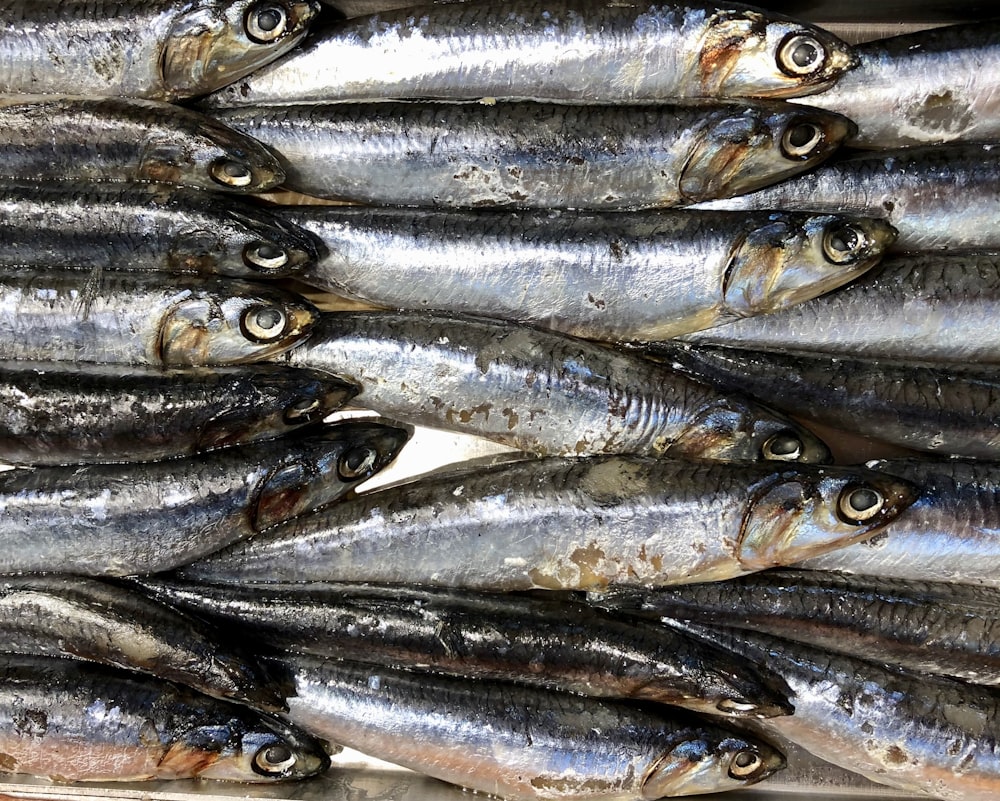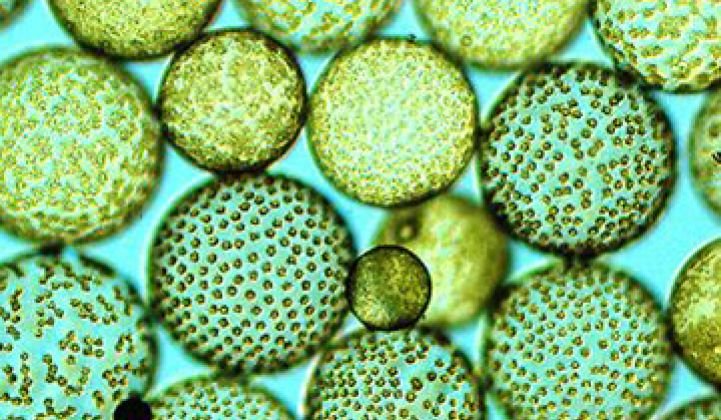“THE SEA, ONCE IT CASTS ITS SPELL, HOLDS ONE IN ITS NET OF WONDER FOREVER.” -Jacques Cousteau
The marine ecosystem covers about 70 percent of our Earth’s environment. From the smallest marine microorganisms to the largest, the enormous Antarctic blue whale, this percentage comprises a vast diversity of living and non-living things. The world’s population in 2015 was about 7.3 billion, which increased to 7.9 billion in 2021. To meet the needs of this ever-growing population, we need to move towards new sustainable goals that provide basic needs to the people without negatively impacting the environment.
Blue biotechnology or marine biotechnology is a relatively new field. It utilizes marine biodiversity in terms of chemistry, physiology, and marine organisms. Unfortunately, the marine ecosystem remains the most under-explored, under-studies, and under-utilized, even with so many beneficial properties.
POTENTIALS OF BLUE BIOTECHNOLOGY
Science and technological improvements have made it easier for marine biotechnology to be applied in various industries, from food and feed to biomedical research and pharmaceuticals (Rotter et al., 2021). Marine biotechnology involves the production of commodities and processes obtained from marine creatures using technologies such as biotechnology, molecular and cellular biology, and bioinformatics.
This field is fascinating both scientifically and commercially. There are no ecosystems on the Earth that can provide greater genetic diversity for creating new commodities and processes than the marine environments. The marine ecosystem is undeniably enriched with many sources for compounds that have great importance in biotechnology (Thakur & Thakur, 2021).
Following are a few areas where blue biotechnology is beneficial:
PHARMACEUTICALS
Exploration of the marine ecosystem revealed evidence of various compounds derived from marine species, unraveling the application of marine biotechnology in the pharmaceutical sector. Marine natural compounds have up to four times the success rate of other naturally produced substances, making them a valuable source in medication development (Sigwart, Blasiak, Jaspars, Jouffray & Tasdemir, 2021).
These compounds are being used as antioxidants, antibiotics, analgesics, anti-cancer, anti-inflammatory, and antifungal medicines in the pharmaceutical sector (Mayer et al., 2019). Some FDA-approved medications based on marine biotechnology include YondelisR, PrialtR analgesic, and antitumor agent Cytosar-UR (Martins, Vieira, Gaspar & Santos, 2014).
NUTRACEUTICALS
Due to the growing population and dwindling agricultural food production, a considerable amount of food must be generated from ecologically favorable marine alternatives. (Olsen, 2011). Marine biotechnology, for instance, is extensively used to extract minerals, fibers, and secondary metabolites from macro-, micro-, and cyanobacteria for use as dietary nutrients or nutraceutical supplements.
Fish are known to have established antioxidant and cardioprotective properties due to omega-3 fatty acids (Suleria, Osborne, Masci & Gobe, 2015). Thus, marine biotechnology is critical for assisting in resolving the worldwide crisis of health and nutrition.

COSMETICS AND COSMECEUTICALS
Marine biotechnology contributes significantly to the cosmetics sector by introducing novel substances into cosmetics formulation with additional health benefits that attract people’s attention. Several marine-based cosmetics have been obtained biotechnologically and are now on the market (Guillerme, Couteau & Coiffard, 2017).
Compounds used in cosmetic formulations are often isolated from microalgae or other marine organisms and then grown in photo-bioreactors. For instance, these components may be employed as antioxidants, gels, pigments, and other ingredients in skincare and hair care products. (Alves, Sousa, Kijjoa & Pinto, 2020).
Although several firms in the cosmetics industry, such as Mibelle BiochemistryR and GreenaltechR, fund marine biotechnology, there is relatively limited scientific evidence in this field (Barcelos, Lupki, Campolina, Nelson & Molina, 2018). Hence, research in this area should be promoted to enhance manufacturing procedures and the use of marine organism-derived chemicals.
BIOMATERIALS
Marine biomaterial is an ever-growing topic of study with substantial applications in industry, health, agriculture, biofuels, bioenergy, and other sectors. Despite industrial pollution, overfishing, and unforeseen climate change, marine biomaterials are plentiful. Marine biomaterials, including polysaccharides, bioceramics, enzymes, peptides, lipids, and nanoparticles, have a broad spectrum of biocompatibility.
Harvesting marine biomaterials is integral to the application of marine biotechnology. Marine biomaterials are a great alternative to traditional materials due to their extensive biocompatibility and ability to biodegrade with little to no side effects. Globally, marine biomaterials have established a strong market position and are attracting a broad spectrum of marine researchers and customers (Ali, Mir, Hyder & Yang, 2020).
BIOFUELS
Marine biofuels are obtained from micro and macro algae and therefore have evolved as a potential substitute for terrestrial ecosystems. Marine biofuel produces 10-100 times increased yields than traditional biofuels obtained from the terrestrial ecosystem.

Bioethanol, often referred to as 3 G ethanol, is the most widely synthesized biofuel using marine biotechnology. It is created from algae biomass (John, Anisha, Nampoothiri & Pandey, 2011). The energy produced from algae has considerable advantages, including minimal land usage; it does not impact agricultural production, and technologies with minimum costs are now being established.
Further, it is anticipated that biofuel generation would efficiently and successfully eliminate reliance on imported fuels. Utilizing microalgae’s capability to produce biofuel in Pakistan might help the nation become energy self-sufficient.
Even though Pakistan’s government has established many entities to nurture and facilitate alternative energy sources and achieve a 10% profit margin of biofuels in the energy industry by 2020, the goals have yet to be accomplished on ground levels (Shah et al. 2018).
FUTURE ASPECTS
Food security and world hunger are among the most recurring issues for developing nations. Amidst such problems, biotechnology is paving different ways and technologies to cope.
It offers promising, exciting, and environmentally friendly alternatives to meet the consumer demands for the sustainable development of agriculture. Biotechnology has different applications that can significantly impact and resolve world hunger by revolutionalizing fertility, agricultural biotechnology, and wellbeing.
As Mike Pompeo said:
“Feeding the world will be one of the greatest challenges of the 21st century. It will be impossible without using scientific advancements and biotechnology.”
REFERENCES
Ali, M., Mir, S., Hyder, M., & Yang, W. (2020). Harvesting of Bioenergy and Biomaterials from Marine Resources. Encyclopedia Of Marine Biotechnology, 711-736. DOI: 10.1002/9781119143802.ch27
Alves, A., Sousa, E., Kijjoa, A., & Pinto, M. (2020). Marine-Derived Compounds with Potential Use as Cosmeceuticals and Nutricosmetics. Molecules, 25(11), 2536. DOI: 10.3390/molecules25112536
Barcelos, M., Lupki, F., Campolina, G., Nelson, D., & Molina, G. (2018). The colors of biotechnology: general overview and developments of white, green, and blue areas. FEMS Microbiology Letters, 365(21). DOI: 10.1093/female/fny239
Guillerme, J., Couteau, C., & Coiffard, L. (2017). Applications for Marine Resources in Cosmetics. Cosmetics, 4(3), 35. doi: 10.3390/cosmetics4030035
John, R., Anisha, G., Nampoothiri, K., & Pandey, A. (2011). Micro and macroalgal biomass: A renewable source for bioethanol. Bioresource Technology, 102(1), 186-193. DOI: 10.1016/j.biortech.2010.06.139
Martins, A., Vieira, H., Gaspar, H., & Santos, S. (2014). Marketed Marine Natural Products in the Pharmaceutical and Cosmeceutical Industries: Tips for Success. Marine Drugs, 12(2), 1066-1101. DOI: 10.3390/md12021066
Mayer, A., Guerrero, A., Rodríguez, A., Taglialatela-Scafati, O., Nakamura, F., & Fusetani, N. (2019). Marine Pharmacology in 2014–2015: Marine Compounds with Antibacterial, Antidiabetic, Antifungal, Anti-Inflammatory, Antiprotozoal, Antituberculosis, Antiviral, and Anthelmintic Activities; Affecting the Immune and Nervous Systems, and Other Miscellaneous Mechanisms of Action. Marine Drugs, 18(1), 5. doi: 10.3390/md18010005
Olsen, Y. (2011). Resources for fish feed in future mariculture. Aquaculture Environment Interactions, 1(3), 187-200. DOI: 10.3354/aei00019
Shah, S., Raja, I., Rizwan, M., Rashid, N., Mahmood, Q., Shah, F., & Pervez, A. (2018). Potential of microalgal biodiesel production and its sustainability perspectives in Pakistan. Renewable And Sustainable Energy Reviews, 81, 76-92. DOI: 10.1016/j.rser.2017.07.044
Rotter, A., Barbier, M., Bertoni, F., Bones, A., Cancela, M., & Carlsson, J. et al. (2021). The Essentials of Marine Biotechnology. Frontiers In Marine Science, 8. doi: 10.3389/fmars.2021.629629
Sigwart, J., Blasiak, R., Jaspars, M., Jouffray, J., & Tasdemir, D. (2021). Unlocking the potential of marine biodiscovery. Natural Product Reports, 38(7), 1235-1242. DOI: 10.1039/d0np00067a
Suleria, H., Osborne, S., Masci, P., & Gobe, G. (2015). Marine-Based Nutraceuticals: An Innovative Trend in the Food and Supplement Industries. Marine Drugs, 13(10), 6336-6351. DOI: 10.3390/md13106336
Thakur, N., & Thakur, A. (2021). Marine biotechnology: An overview. Retrieved 19 December 2021, from http://nopr.niscair.res.in/handle/123456789/7759

Samra Hayat Khan is a Biotechnologist, currently works in a pharmaceutical company as a research and development officer. Samra is a passionate advocate for marine sciences, their unparalleled benefits for humankind, and their significance for saving mother earth.

